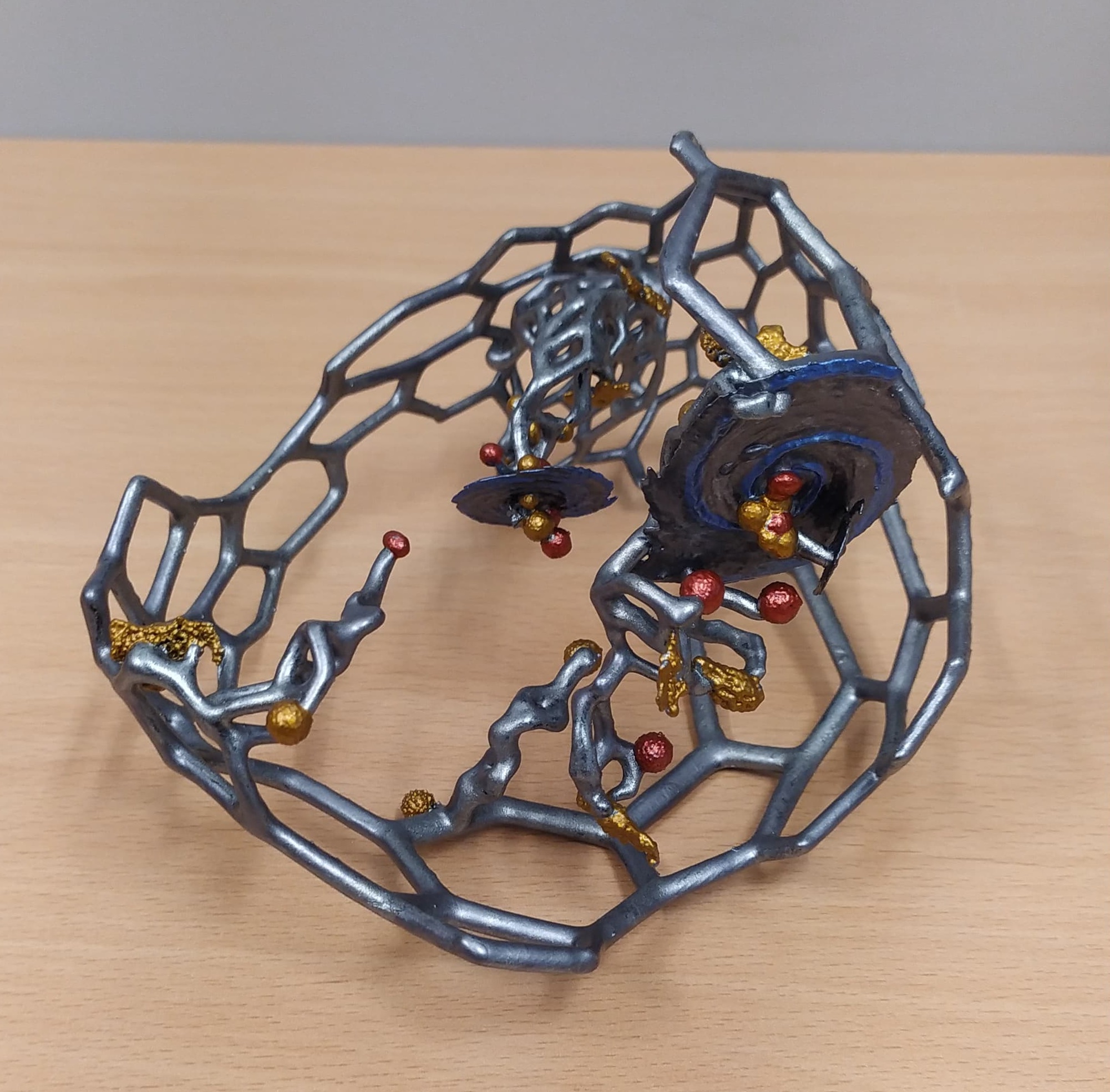Galaxy groups
Galaxy groups are gatherings of at most about 50 galaxies bound together by the force of gravity, confined to a region of space a few million light years across.
The Local Group
Our galaxy, the Milky Way, is bound by gravity to other nearby galaxies, forming the Local Group. It has a diameter of about 10 million light years. It is part of the Virgo supercluster, which in turn is within the Laniakea supercluster. In our 3D model of the cosmic web we have depicted Laniakea and its surroundings.
Andromeda (also known as M31) is the largest galaxy in the Local Group. It is estimated to have a diameter of 152,000 light years and is home to 1 trillion stars. The Milky Way is the second largest galaxy in the Local Group, with an estimated diameter of about 90,000 light years. It has about 200,000 million stars.
The galaxies of the Local Group
Both Andromeda and the Milky Way are spiral-type galaxies. Very close to each of them we find dwarf galaxies of the spheroidal or irregular type, which are their satellite galaxies. Among the satellite galaxies of the Milky Way, the Large Magellanic Cloud, the Small Magellanic Cloud and the Saggitarius Dwarf stand out as the largest.
The Milky Way and Andromeda are approaching each other at the speed of 123 kilometers per second, so they are expected to collide within about 4.5 billion years. The final fate of the Local Group will be to become a single elliptical galaxy, tens of billions of years from now.
The 3D model
In this 3D model, the brightest galaxies in the Local Group appear. Their relative positions are the real ones, according to the astronomical data we have.
The galaxies are suspended in the dark matter lattice in which the Local Group is immersed. This halo is not shown in its entirety: we have left gaps so that all the galaxies inside it can be accessed with your hands.
The shape of each galaxy reflects its actual morphology: spiral, spheroidal or irregular.
The largest spiral galaxy is Andromeda. Attached to it almost perpendicular we find another spiral galaxy, the Triangulum galaxy; it is the third largest in the Local Group.
Above and below the Andromeda disk we find satellite galaxies, represented by spheres, since most are dwarf galaxies of the spheroidal type. A little further away we also see some irregular ones.
Near the center of the model, we find our Milky Way Galaxy, with its spiral shape. Attached to it are its satellite dwarf galaxies and the two Magellanic Clouds, which barely stand out from the other satellite spheroidal galaxies, but which we can identify by their spiral and irregular shapes and because their ends are sharp. The spiral is the Large Magellanic Cloud; the irregular one is the Small Magellanic Cloud.
The model has been created by Emilio Terol (OAUV) and Alberto Fernández Soto (IFCA) using real data on distances and positions of the galaxies of the Local Group.
This work has been carried out with a grant from the R&D&I ‘Proof of Concept’ 2022 (PDC2022) call for projects, financed by the European Union through the NextGenerationEU Recovery, Transformation and Resilience Plan. Project’s reference: PDC2022-133930-I00.

